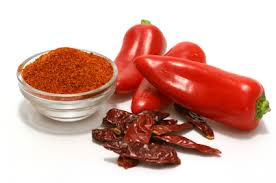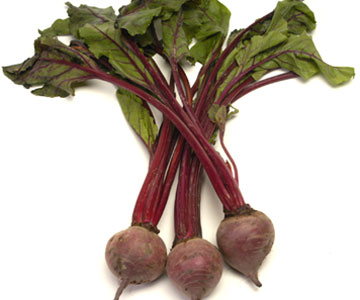
Cayenne(Capsicum annuum; C. frutescens)
By Art Presser, PharmD - President, Huntington College of Health Sciences
Background:
Cayenne or Capsicum consists of the dried...
 Cinnamon:
Cinnamon:
A Supplement for Diabetes, Body Composition, Cardiovascular Health & Antioxidant Protection
By Gene Bruno, MS, MHS
Don’t you just love the smell and taste of cinnamon in a warm, gooey cinnamon bun? As it turns out, the cinnamon may actually provide you with some significant health benefits (although the same can’t be said of the gooey bun; sorry). So let’s take a closer look at cinnamon.
The use of cinnamon for health is not new. In fact, cinnamon bark has been used for several thousand years in traditional Eastern and Western systems of medicine, for such purposes as anorexia, bloating, dyspepsia with nausea, flatulent colic, and spastic conditions of the GI tract.1 Cinnamon also has a history of traditional use in Korea, China and Russia for treating people with diabetes.2
So what is it about cinnamon that gives it these medicinal properties? The answer is its natural constituents. Specifically, it is the volatile oils (such as eugenol and cinnamaldehyde) as well as the phenolic compounds (such as polyphenol type-A polymers).3 4
Modern researchIn addition to traditional use, modern research has demonstrated a number of benefits resulting from cinnamon supplementation. These include improvements in blood sugar for type 2 diabetics, improvements in body composition (e.g., increased lean mass), improvements in cardiovascular parameters, and substantial antioxidant properties. Following is a brief overview of this research.
Improvements in blood sugar
In research by Khan et al5, subjects with type 2 diabetes who took 1, 3 or 6 grams of cinnamon per day for 40 days lowered fasting blood sugar by 18% to 29%. The highest dose produced the most rapid response; although the lowest dose produced the most sustained response over the course of the study.
A more recent placebo-controlled, double-blind6 study was conducted on 79 patients with type 2 diabetes mellitus. Subjects were given 336 mg daily of a water-soluble cinnamon extract (corresponding to 3 g of cinnamon powder) or a placebo for 4 months. Those using the cinnamon experienced a significant 10.3% reduction in fasting blood sugar, compared to a non- significant 3.4% reduction in the placebo group.
In a placebo-controlled, double-blind study by Ziegenfuss et al7 , 21 adults with metabolic syndrome (i.e., prediabetes) were given a water-soluble cinnamon extract (500 mg per day) or a placebo for 12 weeks. The results were that 83% of those given the extract experienced a significant decrease (about 8%) in fasting blood sugar, compared to only 33% in the placebo group who experienced a decrease.
Improvements in body composition
In the aforementioned study by Ziegenfuss et al8, the subjects also experienced a significant alteration in body composition. Their body fat decreased by 0.7%, and their muscle mass increased by 1.1%. These changes took place without alterations in the diet or physical activity of the subjects.
Improvements in cardiovascular parameters
In the previously cited study by Khan et al9, type 2 diabetics who were given 1, 3 or 6 grams of cinnamon a day for 60 days experienced significant drops in triglycerides (23% to 30%), low-densitylipoprotein (LDL) cholesterol (7% to 27%), and total cholesterol (12% to 26%).In the Ziegenfuss et al10 study, cinnamon resulted in a 3.8% reduction in systolic blood pressure. Likewise, other research11 demonstrated that cinnamon was able to reduce systolic blood pressure in spontaneously hypertensive rats.
Substantial antioxidant properties
As stated previously, cinnamon contains polyphenols. This is important since polyphenols are potent antioxidant compounds which can help to reduce the oxidative damage caused by free radicals.12 According to Webb13 , a recent study assessed antioxidant status and oxidative damage in 11 obese, prediabetic subjects given a water-soluble cinnamon extract, compared to10 obese, prediabetic subjects given a placebo. Those who received the cinnamon experienced a 14% reduction in markers of oxidative damage, as well as an increase in markers of total antioxidant capacity.
When used orally and appropriately, cinnamon is a safe supplement.14 As a matter of fact, cinnamon has Generally Recognized as Safe (GRAS) status in the United States.15 In pregnancy, cinnamon is ikely safe when consumed in amounts commonly found in foods16 , but may not be safe when used orally in amounts greater than those found in foods.17
Based upon the research discussed, an appropriate dose of cinnamon would range between 500-3000 mg daily.
Smart SupplementationTM is a free series of educational literature created by Huntington College of Health Sciences (HCHS) as a public service. Although copyrighted, it may be freely photocopied and distributed, but may not be altered in any way. Smart SupplementationTM is not intended as medical advice. For diagnosis and treatment of any medical condition, consult your physician.
1. Blumenthal M, Goldberg A, Brinckmann J (eds). Herbal Medicine: Expanded Commission E Monographs. Newton, MA: Integrative Medicine Communications; 2000. 2. Kim SH, Hyun SH, Choung SY. Anti-diabetc effect of cinnamon extract on blood glucose in db/db mice. Journal of Ethnopharmacology 2006 104:119-123. 3. Blumenthal M, Goldberg A, Brinckmann J (eds). Herbal Medicine: Expanded Commission E Monographs. Newton, MA: Integrative Medicine Communications; 2000. 4. Webb D. A scientific review: Cinnamon and its role in diabetes. Sarasota, FL: Integrity Nutraceuticals International; n.d. 5. Khan A, Safdar M, Ali Khan M, et al. Cinnamon improves glucose and lipids of people with type 2 diabetes. Diabetes Care 2003; 26:3215-8. 6. Mang B, Wolters M, Schmitt B, Kelb K, Lichtinghagen R, Stichtenoth DO, Hahn A. Effects of a cinnamon extract on plasma glucose, HbA, and serum lipids in diabetes mellitus type 2. European Journal of Clinical Investigation 2006; 36:340–344 7. Ziegenfguss TN, Hofheins JE, Mendel RW, Landis J, Anderson RA. Effects of a Water-Soluble Cinnamon Extract on Body Composition and Features of the Metabolic Syndrome in Pre-Diabetic Men and Women. Journal of the International Society of Sports Nutrition 2006; 3(2):45-53. 8. Ziegenfguss TN, Hofheins JE, Mendel RW, Landis J, Anderson RA. Effects of a Water-Soluble Cinnamon Extract on Body Composition and Features of the Metabolic Syndrome in Pre-Diabetic Men and Women. Journal of the International Society of Sports Nutrition 2006; 3(2):45-53. 9. Khan A, Safdar M, Ali Khan M, et al. Cinnamon improves glucose and lipids of people with type 2 diabetes. Diabetes Care 2003; 26:3215-8. 10. Ziegenfguss TN, Hofheins JE, Mendel RW, Landis J, Anderson RA. Effects of a Water-Soluble Cinnamon Extract on Body Composition and Features of the Metabolic Syndrome in Pre-Diabetic Men and Women. Journal of the International Society of Sports Nutrition 2006; 3(2):45-53. 11. Preuss HG, Echard B, Polansky MM, Anderson R. Whole Cinnamon and Aqueous Extracts Ameliorate Sucrose-Induced Blood Pressure Elevations in Spontaneously Hypertensive Rats. Journal of the American College of Nutrition 2006; 25(2):144-150. 12. Shobana S, Naidu KA. Antioxidant activity of selected Indian spices. Prostaglandins Leukot Essent Fatty Acids 2000; 62(2):107-110. 13. Webb D. A scientific review: Cinnamon and its role in diabetes. Sarasota, FL: Integrity Nutraceuticals International; n.d. 14. McGuffin M, Hobbs C, Upton R, Goldberg A, eds. American Herbal Products Association's Botanical Safety Handbook. Boca Raton, FL: CRC Press, LLC 1997. 15. FDA. Center for Food Safety and Applied Nutrition, Office of Premarket Approval, EAFUS: A food additive database. Available at: vm.cfsan.fda.gov/~dms/eafus.html. 16. FDA. Center for Food Safety and Applied Nutrition, Office of Premarket Approval, EAFUS: A food additive database. Available at: vm.cfsan.fda.gov/~dms/eafus.html. 17. McGuffin M, Hobbs C, Upton R, Goldberg A, eds. American Herbal Products Association's Botanical Safety Handbook. Boca Raton, FL: CRC Press, LLC 1997.

By Art Presser, PharmD - President, Huntington College of Health Sciences
Cayenne or Capsicum consists of the dried...

You may have seen beets at the local salad bar, or maybe had them with dinner out of a can. The picture above is what beets look like pulled right out of the ground....